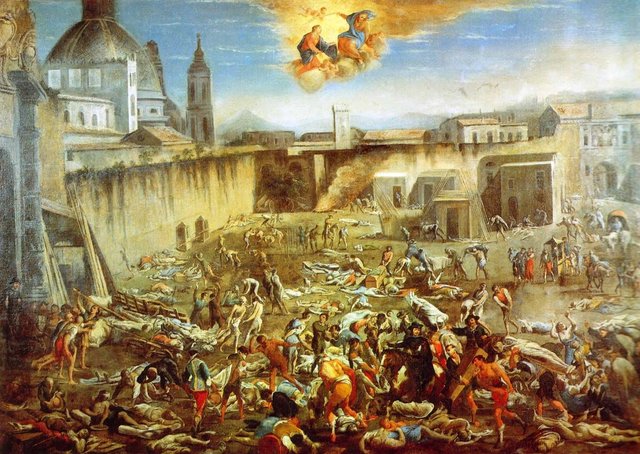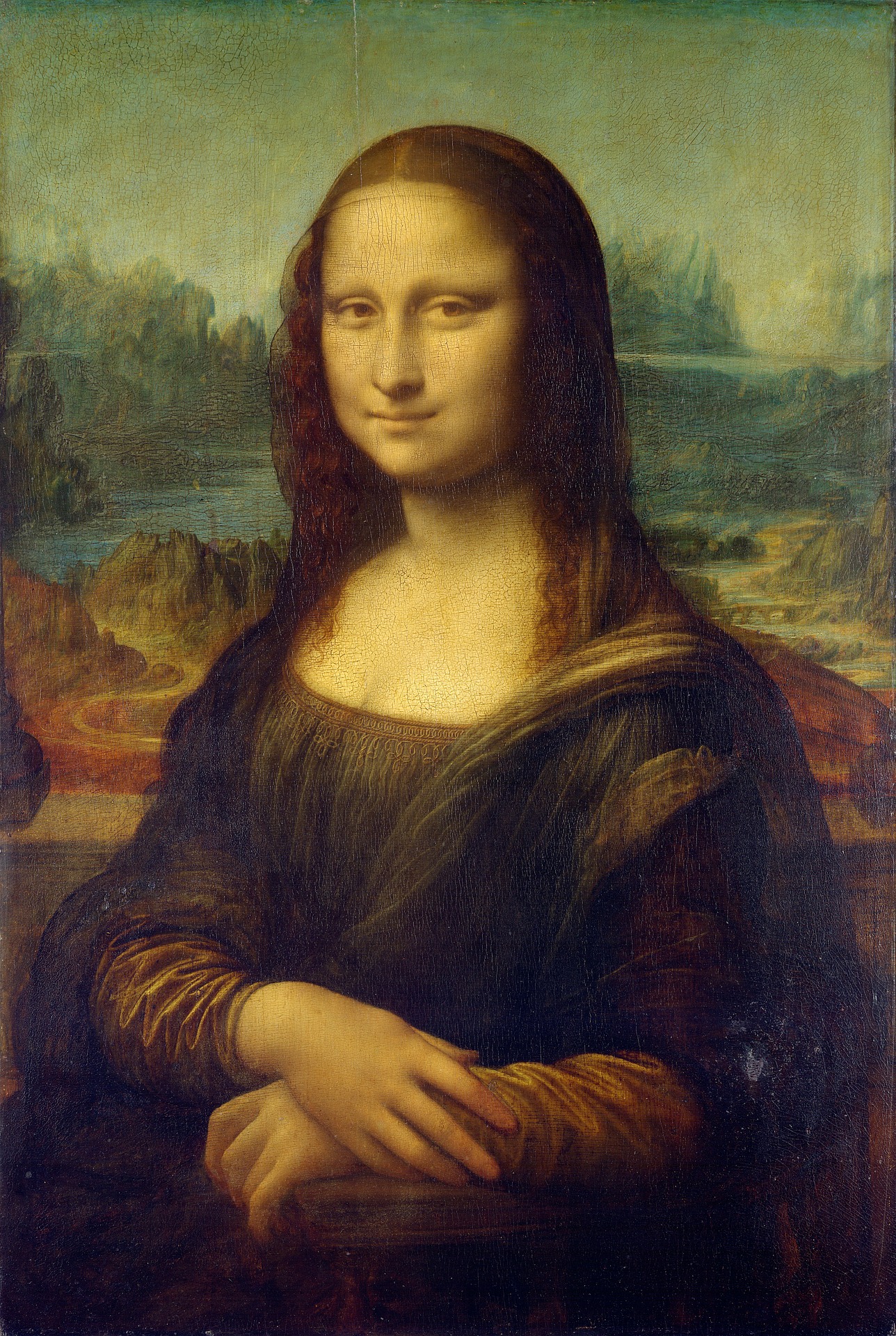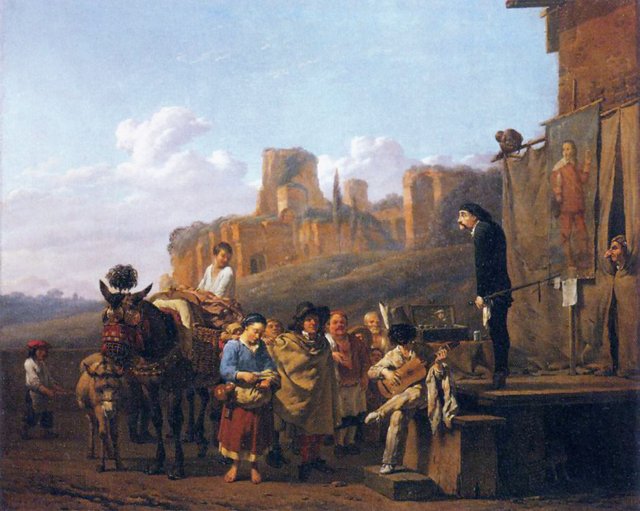Insieme verso uno sviluppo globale (IX parte)
Crisis or not crisis?

As we know, there are corporations, those of trade unions, of categories that crystallize production techniques, as well as organization in the microcosm, in the small artisan shop: it is not possible, in fact, to change the hours, the type of product, the way of producing it, the type of frame. Basically everything is immobilized, while in other countries an adjustment takes place even within the organization of the craft workshop.
But there are also other causes, besides the drop in international demand that make the Italian situation difficult. In fact, at the beginning of 1600 the plague intervenes: out of 4 million inhabitants in central-northern Italy it is estimated that 1.2 are the dead. One might think that in the face of a productive crisis, obviously in a cynical way, the reduction in the number of inhabitants increases well-being: the same wealth is, in fact, divided now by a small number of the population. From an economic point of view, however, the effect is contrary. Because?
If for example in a city there are only 10 plumbers and 5 die, it is clear that the 5 remaining will increase prices considerably. Wages within the shops, therefore, increase because there is obviously a shortage in the supply of workers and artisans; this increase in wages is obviously discharged on the price.
Then there is an extremely important element: since the States have waged war among themselves, they have considerably increased the expenses and consequently the public debt and, therefore, the taxes. But if producers pay more taxes, they also increase the price of products. Also this element, therefore, beyond that concerning the quality, contributes to off-market the Italian products. The important thing is, however, not to think that from the 1600 immediately appears this crisis of the Italian economy.

Come si sa, esistono le corporazioni, quelle sorte di sindacati, di categorie che cristallizzano le tecniche produttive, così come l’organizzazione nel microcosmo, nella piccola bottega artigiana: non è possibile, infatti, cambiare gli orari, il tipo di prodotto, il modo di produrlo, il tipo di telaio. In sostanza è tutto immobilizzato, mentre negli altri paesi avviene un adeguamento anche all'interno dell’organizzazione della bottega artigianale.
Ma vi sono anche altre cause, oltre il calo della domanda internazionale che rendono difficile la situazione italiana. Interviene, infatti, agli inizi del 1600 la peste: su 4 milioni di abitanti nell'Italia centro-settentrionale si calcola che 1,2 sono i morti. Si potrebbe pensare che di fronte ad una crisi produttiva, ovviamente in maniera cinica, al ridursi del numero di abitanti aumenta il benessere: la stessa ricchezza viene, infatti, divisa adesso per un numero ridotto di popolazione. Dal punto di vista economico, tuttavia, l’effetto è contrario. Perché?
Se ad esempio in una città vi sono solo 10 idraulici e ne muoiono 5, è chiaro che i 5 rimanenti aumenteranno notevolmente i prezzi. I salari all'interno delle botteghe, quindi, incrementano perché evidentemente vi è una carenza nell'offerta di operai e di artigiani; tale aumento dei salari si scarica ovviamente sul prezzo.
Vi è poi un elemento estremamente importante: poiché gli Stati si sono fatti guerra tra di loro, hanno aumentato notevolmente le spese e di conseguenza il debito pubblico e, quindi, le tasse. Ma se aumentano le tasse ai produttori, questi aumentano anche il prezzo dei prodotti. Pure questo elemento, perciò, oltre quello riguardante la qualità, contribuisce a mettere fuori mercato i prodotti italiani. L’importante è comunque non pensare che dal 1600 immediatamente appaia questa crisi dell’economia italiana.

Indeed, Venice, for example, still maintains its splendor, opens new routes in the Atlantic, Christopher Columbus goes to Portugal at the service of large Italian traders who reside in Portugal itself and so on. Therefore, everywhere in 1600 the great Italian commercial houses are located in Europe. Colombo was really financed by these houses and, in particular, by the Genoese.
These have control over the finances of Spain and Portugal. Spain, during this period, carries out the wars with the attempt to conquer Europe, then it breaks down in war wars that obviously involve costs. The first lenders to the Spanish monarchy are the Germans, but the Spanish monarchy in the mid-sixteenth century is bankrupt and the Germans obviously fail. They take over the Genoese: the latter are much more experienced in controlling bank failures and the Spanish crown that occur at least every 10 years.
Having felt the smell of failure, the Genoese are guaranteed first with other revenues and therefore the control of the Economy and Finance of Portugal and Spain is in the hands of the Genoese. There would have been, obviously, these convoys after the exploration, following the discoveries, which were going to load goods from the new world without the funding from the Genoese. So at the moment we are talking about the crisis of the high-Italian cities and their productivity, but still obviously there is an irradiation (a presence) in Europe, in the important places of Europe, of Italian finance and especially of Genoa, as well as Venice, which still has moments of great splendor.
But the thing that most amazes is the observation that just when this crisis, which in 700 becomes evident from the production point of view, the Italian market is invaded (unlike the previous period in which it was Europe to be invaded by Italian products) from low-cost products, mainly Dutch and partly English.
Therefore, in the trade balance, as in Southern Italy, raw materials are exported rather than finished products and in imports there is no longer a predominance of raw materials, but vice versa of finished products. We therefore imagine an eclipse of our country.
However, this is the period in which the greatest cultural irradiation and Italian image in the then known world occurs. It is during these years, in fact, first half of the 500, that Leonardo da Vinci is invited to the court of France where he transfers his Mona Lisa; are also the years when Bernini began working in San Pietro, Michelangelo began to paint the sistine chapel as well as the vaults of the papal rooms are painted by Raphael. It is also the period of Tintoretto, Caracci and Tiziano, or rather the great painters who will invade the whole world with their works.
Anzi, Venezia ad esempio mantiene ancora un suo splendore, si aprono nuove rotte nell’atlantico, Cristoforo Colombo si reca in Portogallo al servizio di grandi commercianti italiani che risiedono in Portogallo stesso ecc. Ovunque, quindi, nel 1600 sono dislocate in Europa le grandi case commerciali italiane. Colombo era proprio finanziato da queste case e, in particolare, dai Genovesi.
Questi hanno il controllo delle finanze della Spagna e del Portogallo. La Spagna, in questo periodo attua delle guerre col tentativo di conquista dell’Europa, quindi si abbatte in guerre guerreggiate che comportano ovviamente dei costi. I primi prestatori alla monarchia spagnola sono i tedeschi, ma la monarchia spagnola a metà del Cinquecento fa bancarotta e i tedeschi ovviamente falliscono. Ad essi subentrano i Genovesi: quest’ultimi sono molto più esperti nel controllare i fallimenti della banca e della corona spagnola che avvengono almeno ogni 10 anni.
Sentito l’odore di fallimento, i genovesi si garantiscono prima con delle altre entrate e quindi il controllo dell'Economia e delle Finanze del Portogallo e della Spagna è in mano ai genovesi. Non ci sarebbero stati, ovviamente, questi convogli successivi all'esplorazione, successivi alle scoperte, che andavano a caricare beni dal nuovo mondo senza il finanziamento da parte dei genovesi. Quindi al momento stiamo parlando di crisi delle città alto-italiane e della loro produttività, però ancora ovviamente c’è un irradiamento (una presenza) nell'Europa, nei posti importanti dell'Europa, della finanza italiana e soprattutto di Genova, così come Venezia, che ha ancora momenti di grande splendore.
Ma la cosa che più sbalordisce è l'osservare che proprio nel momento in cui avanza questa crisi, che nel 700 diventa evidente dal punto di vista produttivo, il mercato italiano viene invaso (a differenza del periodo precedente in cui era l’Europa ad essere invasa dai prodotti italiani) dai prodotti a basso costo, soprattutto olandesi e in parte inglesi.
Nella bilancia commerciale prevalgono, quindi, così come nell’Italia meridionale, le materie prime da esportare anziché i prodotti finiti e nelle importazioni non vi è più una prevalenza di materie prime, ma viceversa di prodotti finiti. Immaginiamo, pertanto, un’eclissi del nostro paese.
Tuttavia questo è il periodo in cui si verifica il maggior irradiamento culturale e d’immagine italiano nel mondo allora conosciuto. È proprio durante questi anni infatti, prima metà del 500, che Leonardo da Vinci viene invitato alla corte di Francia dove trasferisce la propria Gioconda; sono anche gli anni in cui Bernini inizia a lavorare a San Pietro, Michelangelo inizia a dipingere la cappella sistina così come le volte delle stanze papali vengono pitturate da Raffaello. Si tratta anche del periodo di Tintoretto, Caracci e Tiziano, ossia dei grandi pittori che invaderanno tutto il mondo con le loro opere.

All this does not happen only in the field of painting or poetry (with the poet Marino): in fact, in those years the Baroque in Italy was born, which spread throughout Europe, in literature as in art above all, but developed in Italy is also a triumph in France ballet, widespread in the courts of Paris and invades the whole of Europe; we also witness the birth of the commedia dell'arte: we can imagine this as a house, to which a wall has been removed that allows the viewer to look inside.
It is full of characters such as Pulcinella, Arlecchino, Pantalone, depending on the area in which it is developed and is a comedy of art present in all the courts of Europe, a comedy of Italian art that grows in the moment of greatest crisis . To this is added the Opera, an Italian product that even arrives in the English courts where there is obviously a need for translation, unlike the French courts that partly know Italian.
France is in fact an Italian France: in fact in Lyon, the Medici family with Caterina de Medici and her husband, moved their parent company from Geneva in 1450 and this is where the great production begins (which still today represents the major production center of the silk). In Lyon, home to the Episcopal residence of Ippolito d'Este, a commedia dell'arte is set up in honor of the French sovereigns.
Tutto ciò non avviene soltanto nel campo della pittura o della poesia (con il poeta Marino): nasce, infatti, in quegli anni il Barocco in Italia, che si diffonde in tutta Europa, nella letteratura come nell’arte soprattutto, ma si sviluppa in Italia e ha un trionfo in Francia anche il balletto, diffuso nelle corti di Parigi e che invade l’intera Europa; si assiste inoltre alla nascita della commedia dell’arte: possiamo immaginare questa come una casa, a cui è stato tolto un muro che permette allo spettatore di guardare dentro.
Essa è ricca di personaggi come Pulcinella, Arlecchino, Pantalone, a seconda dell’area in cui si sviluppa ed è una commedia dell’arte presente in tutte le corti d’Europa, una commedia dell’arte italiana che cresce nel momento di maggiore crisi. A questa si aggiunge l’Opera, prodotto italiano che arriva persino nelle corti inglesi dove lì ovviamente è necessaria una traduzione, a differenza delle corti francesi che conoscono in parte l’italiano.
La Francia è infatti una Francia italiana: a Lione difatti, i Medici con Caterina de Medici e il marito, trasferiscono nel 1450 da Ginevra la loro casa madre ed è qui che inizia la grande produzione (che tutt’oggi rappresenta il maggior centro produttivo della seta). Proprio a Lione, sede della casa vescovile di Ippolito d’Este, viene impiantata una commedia dell’arte in onore dei sovrani francesi.

But the most powerful image of Italy's irradiation and power in Europe is that in fact Italians rule other countries, like Cardinal Mazzarino, president of the Council of France in the 1600s. the spread of ballet and comedy on French soil and, in fact, when in 1661 the cardinal dies, the Italian pressure on France is lost.
The attempts to spread Italian culture certainly did not end here: Cardinal Alberone, the son of a Parma gardener, in 1700 governed Spain as president of the council. In the same way in Prague the city's influence is strong, built entirely by Italian engineers and workers who went abroad due to the Italian productive shortage; Prague, as we know it today, is an Italian Prague. Also at the court of Vienna there are the Italian poets who make the bench.
Is it therefore possible to talk about a crisis? Do Italian cities really fail or is it just a historical belief? If we analyze the situation under different facets, Italy certainly does not go through a period of crisis in general, but only sectoral. Why, then, do many historians study this phase of our nation's life as a moment of great depression? Why do they speak and talk about an inexorable crisis?
Ma l’immagine più potente dell’irradiazione e del potere dell’Italia in Europa, è che di fatto degli italiani governino altri paesi, come il cardinale Mazzarino, presidente del consiglio di Francia nel 1600. È proprio a quest’ultimo che si deve la diffusione del balletto e della commedia in terra francese e difatti, quando nel 1661 il cardinale muore, viene meno la pressione italiana sulla Francia.
I tentativi di diffusione della cultura italiana non finirono certamente qui: il cardinale Alberone, figlio di un ortolano di Parma, nel 1700 governa la Spagna da presidente del consiglio. Allo stesso modo a Praga è forte l’influenza della città, costruita interamente da ingegnere e operai italiani che si sono recati all’estero data la carenza produttiva italiana; la Praga bella come si conosce oggi, è una Praga italiana. Anche alla corte di Vienna vi sono i poeti italiani che fanno banco.
È possibile, perciò, parlare di crisi? Le città italiane falliscono veramente o si tratta soltanto di una credenza storica? Se analizziamo la situazione sotto diverse sfaccettature, l’Italia non attraversa sicuramente un periodo di crisi in generale, ma soltanto settoriale. Perché, quindi, molti storici studiano questa fase della vita della nostra nazione come un momento di grande depressione? Perché parlano e parleranno di crisi inesorabile?
Reference sources:
"Storia economica d'Italia: dall'Ottocento ai giorni nostri", V. Castronovo - 1995 - Einaudi
"Il prodotto delle regioni e il divario Nord-Sud in Italia (1861-2004)", P. Malanima e V. Daniele - Rivista di politica economica, 2007
"Storia d'Italia dal dopoguerra a oggi", P. Ginsborg - 2014 - Giulio Einaudi Editore
"Economia e società in Sicilia dopo l'Unità: 1860-1894, l'industria", G. Barbera Cardillo - 1982 - Genève
"Economia e società in Sicilia dopo l'Unita: 1860-1894, l'agricoltura", G. Barbera Cardillo - 1982 - Droz
"La Calabria industriale preunitaria, 1815-1860", G. Barbera Cardillo - 1999 - Edizioni scientifiche italiane
"Mezzogiorno senza meridionalismo: la Sicilia, lo sviluppo, il potere", G. Giarrizzo - 1992 - Marsilio
"Navigazioni e viaggi", G.B. Ramusio - 1985 - Einaudi
"La commedia dell'arte e la società barocca: La fascinazione del teatro", F. Taviani, F. Marotti, G. Romei - 1991 - Bulzoni
"La Commedia dell'Arte: Cesare Molinari", C. Molinari - 1985 - A. Mondadori

Un capolavoro, complimenti per l'esposizione.
Grazie mille, sono onorato!